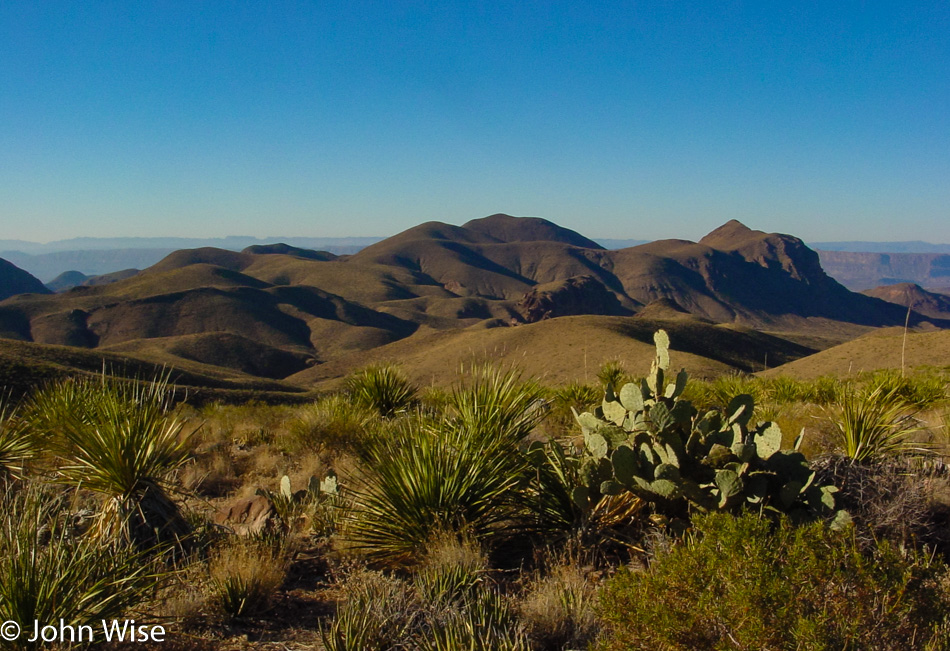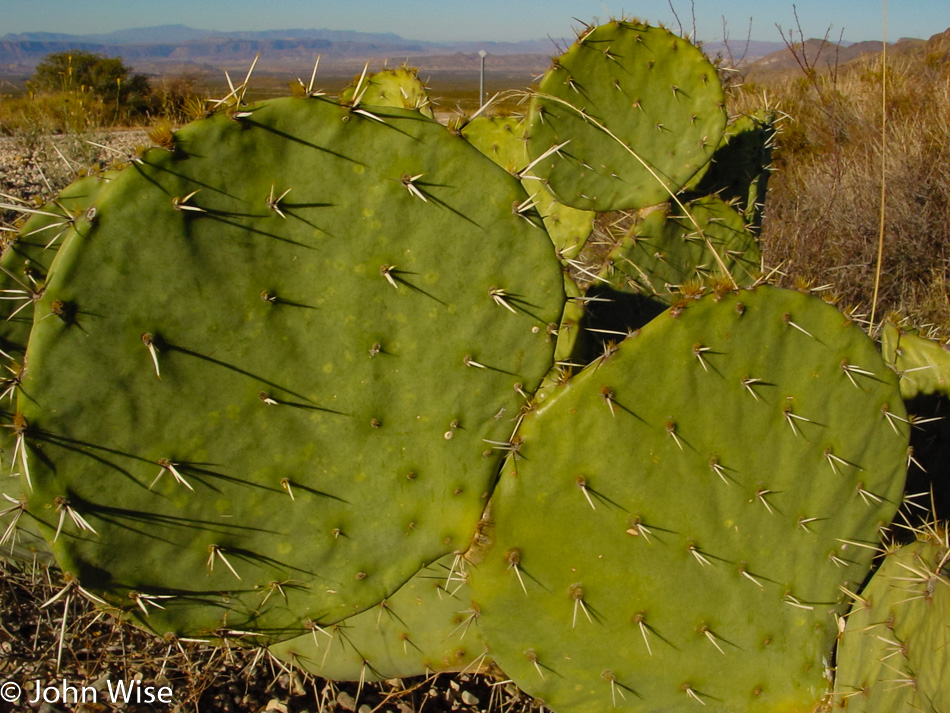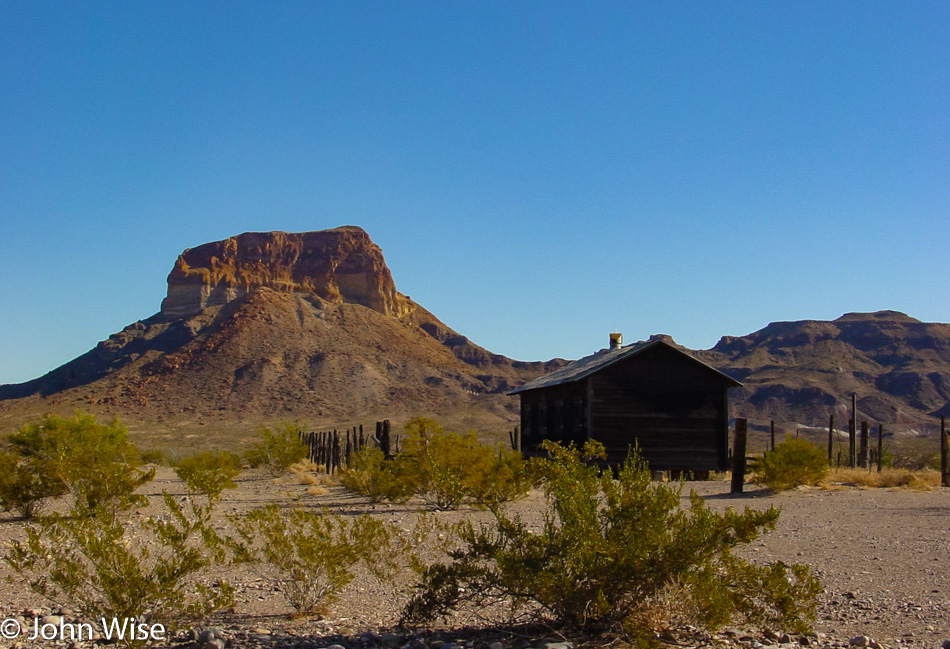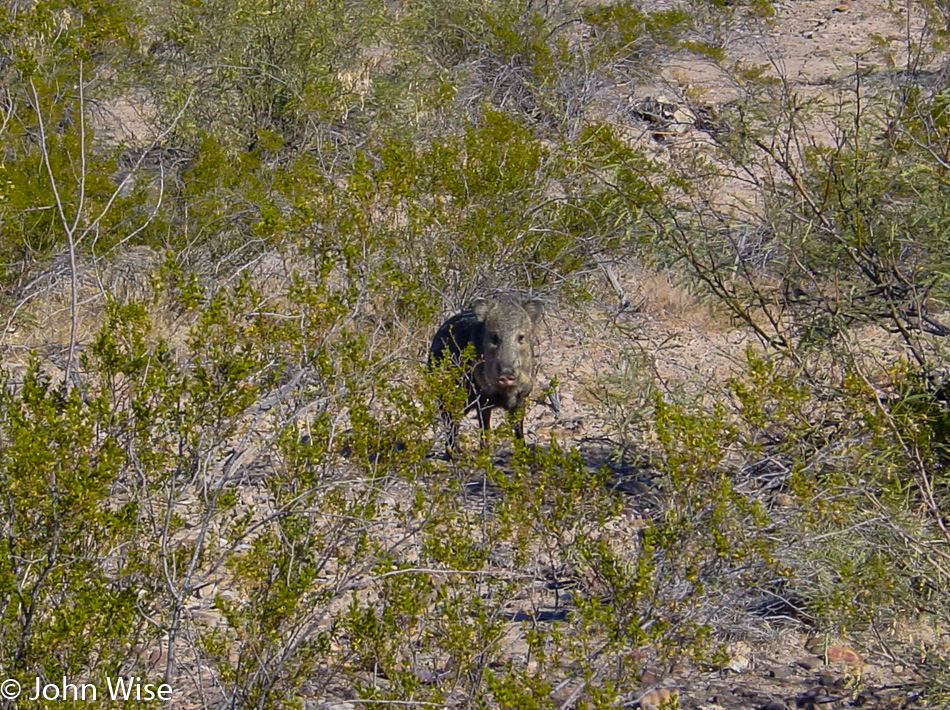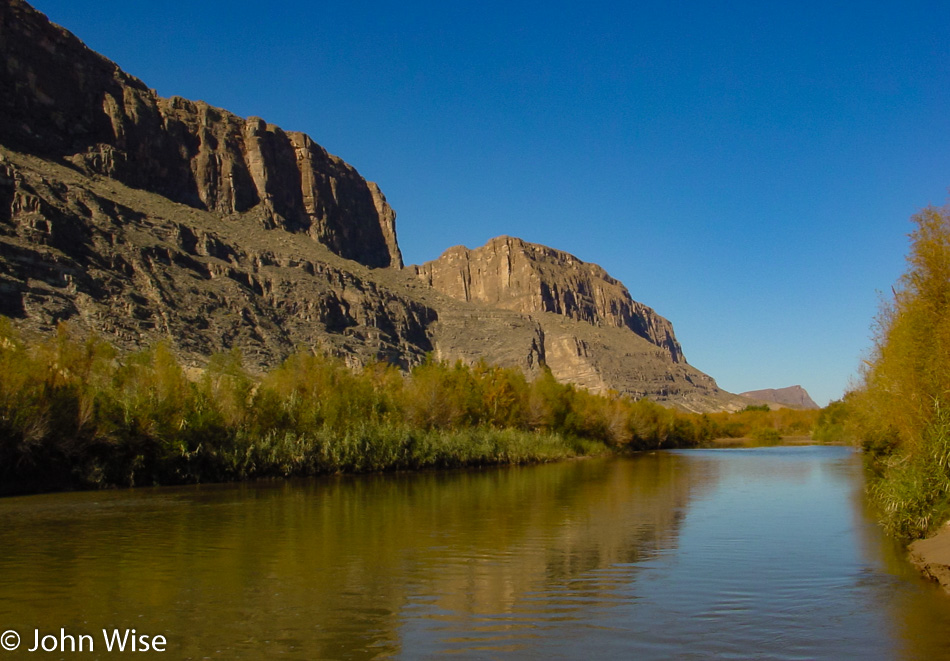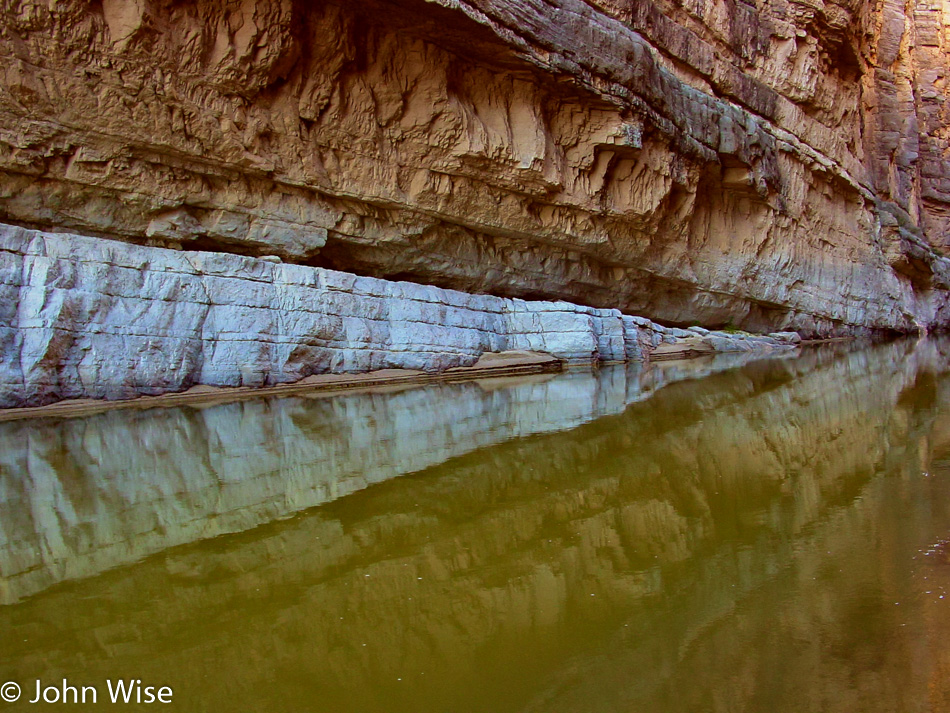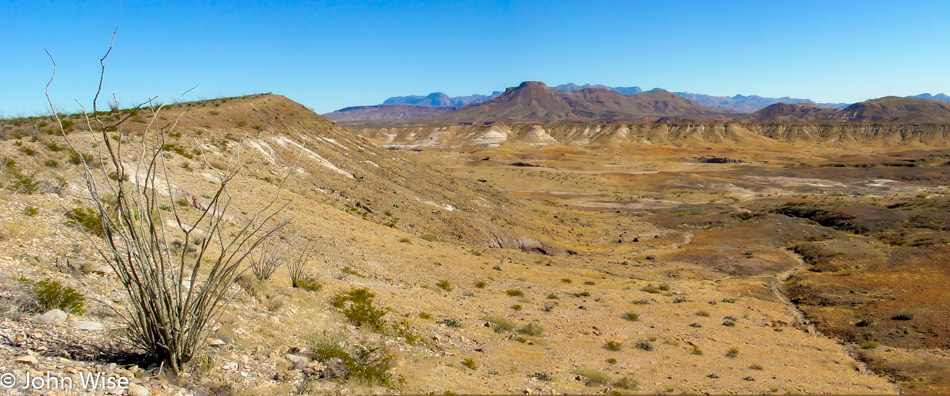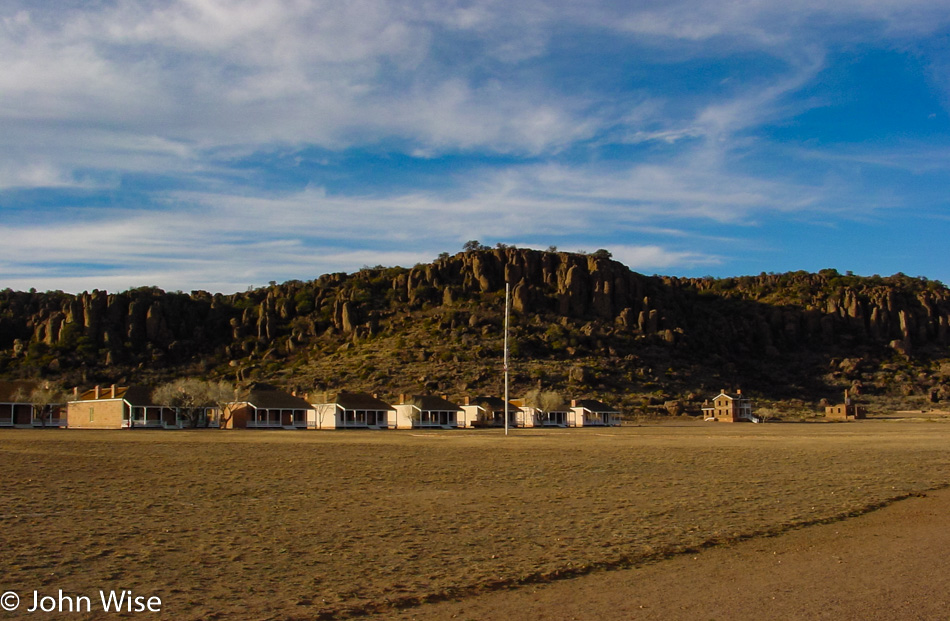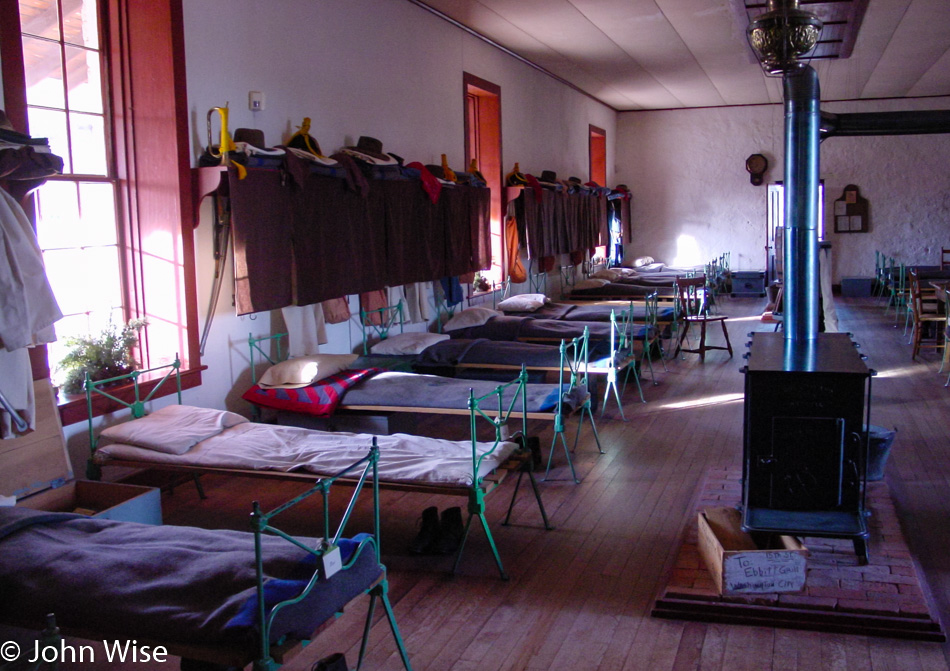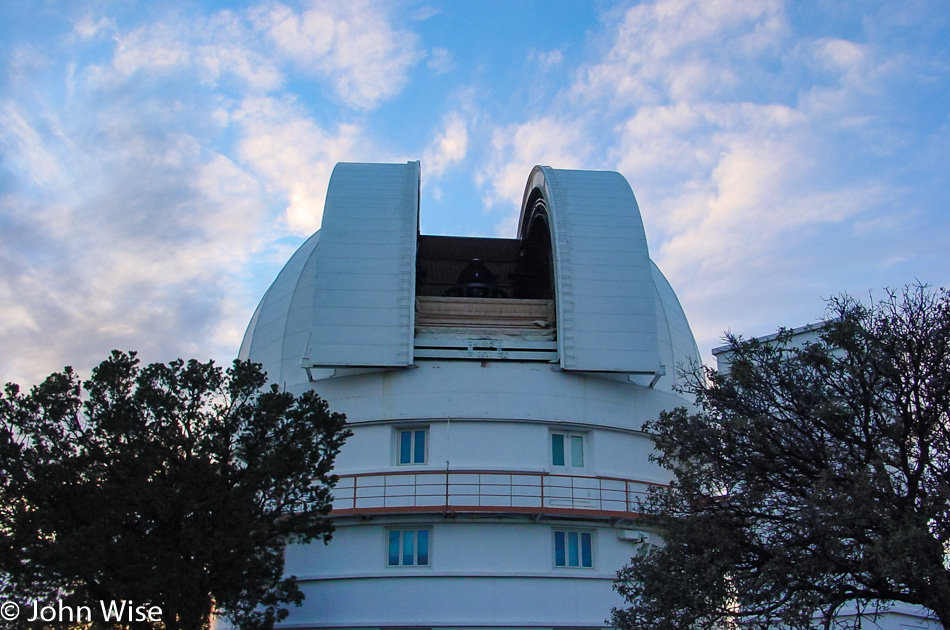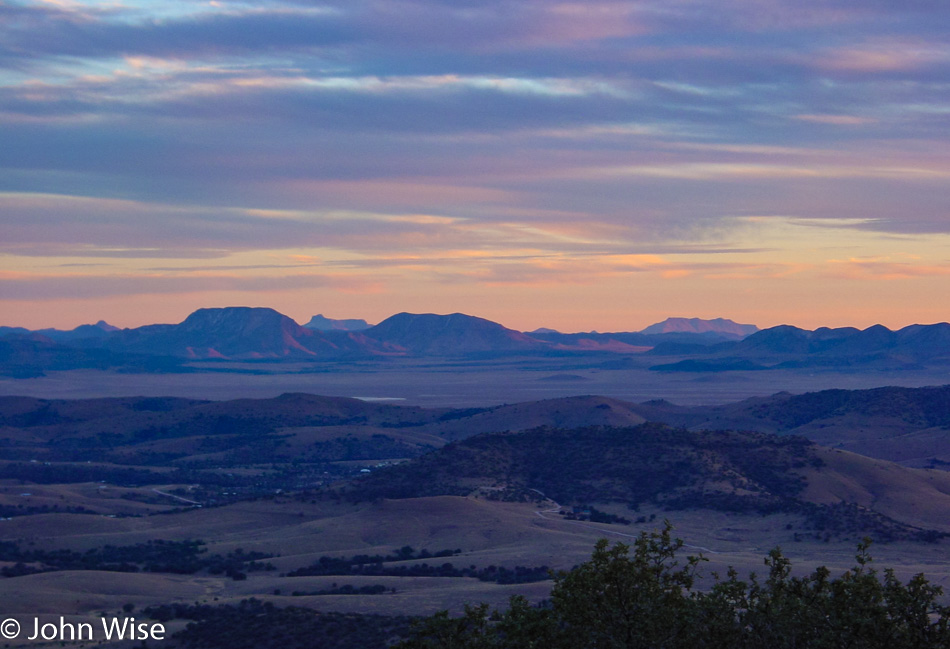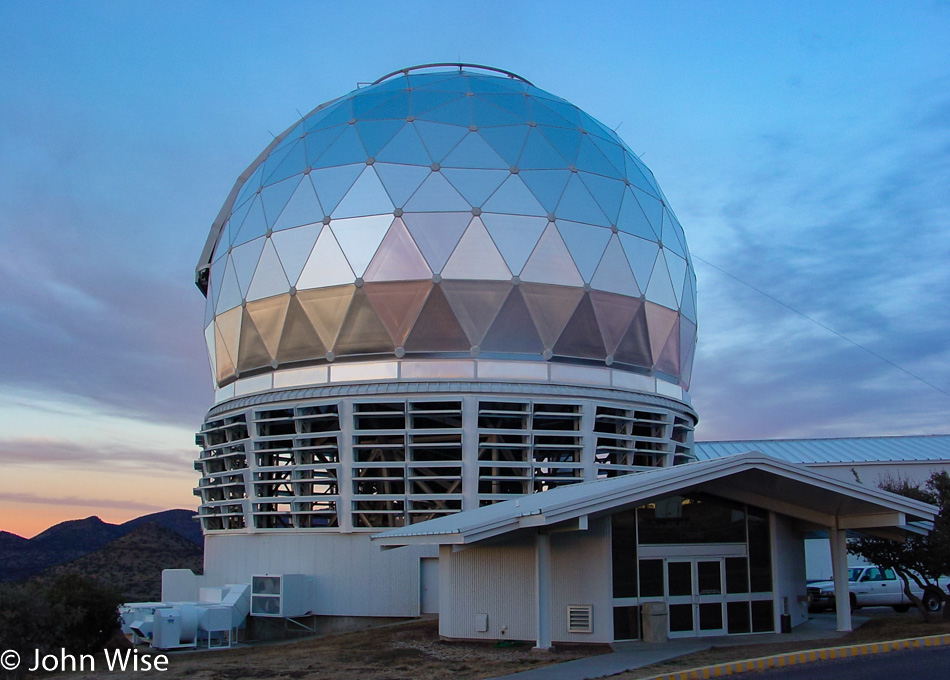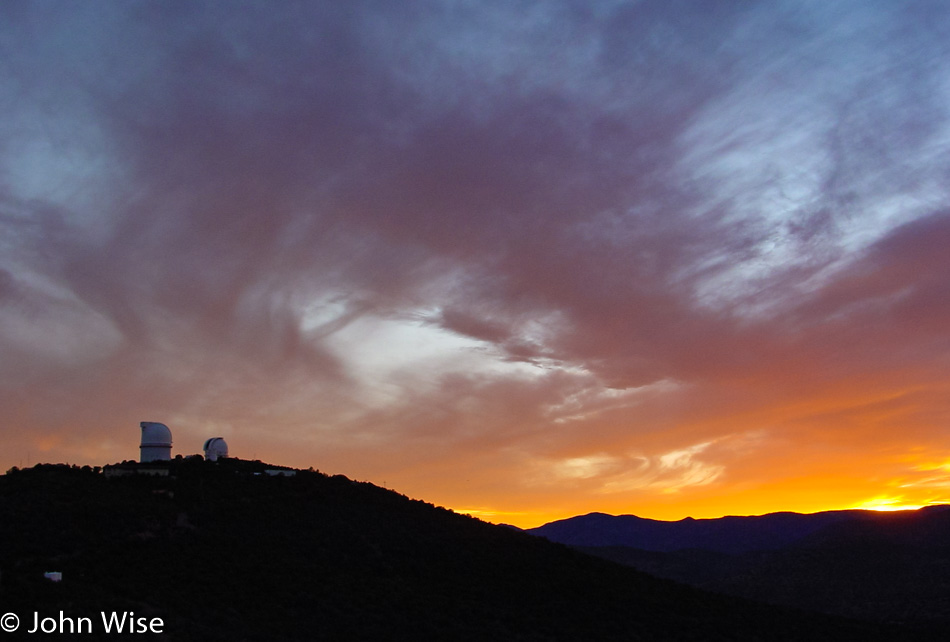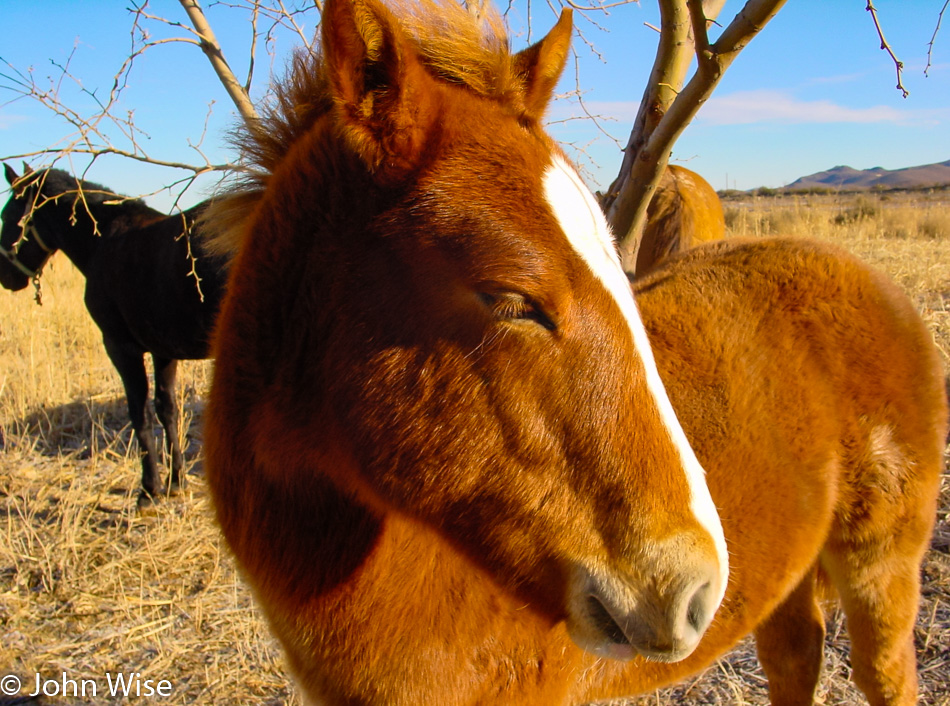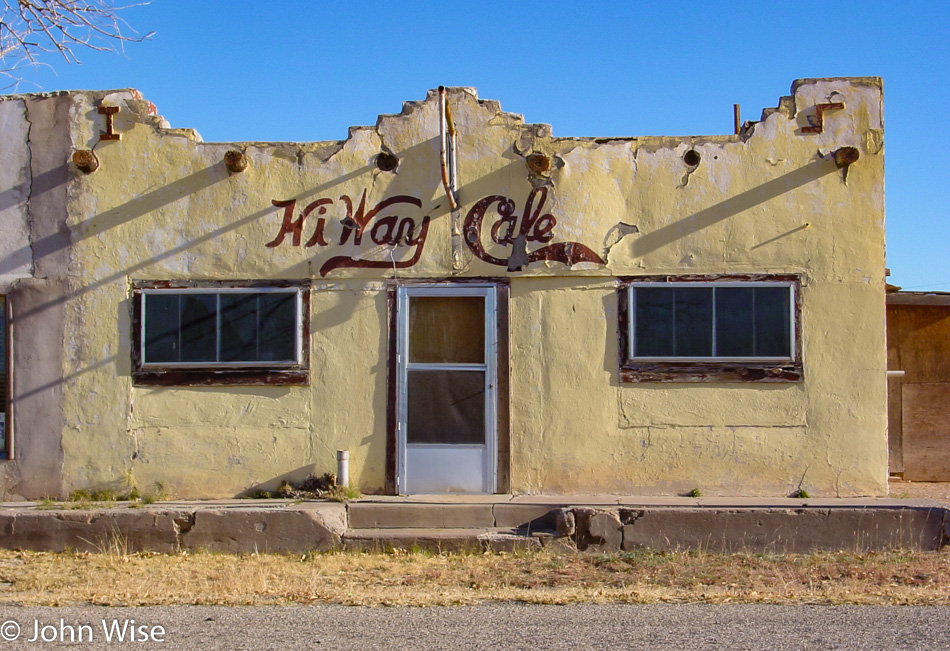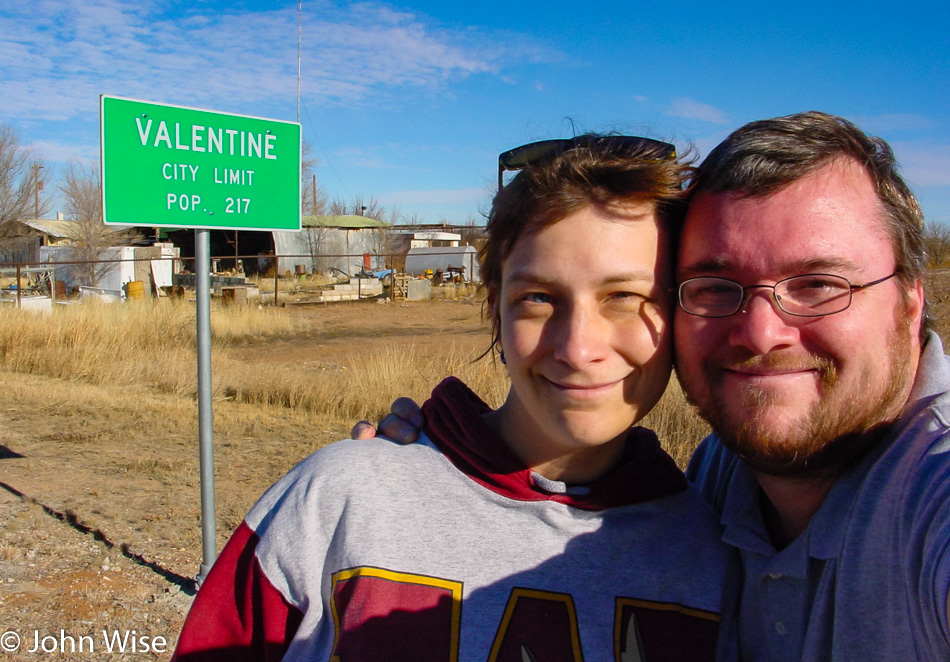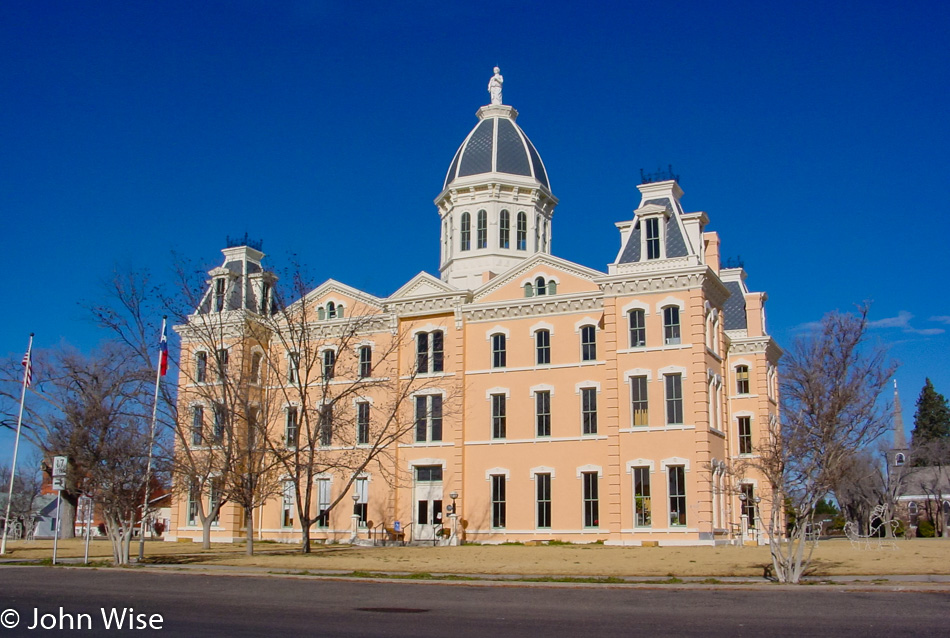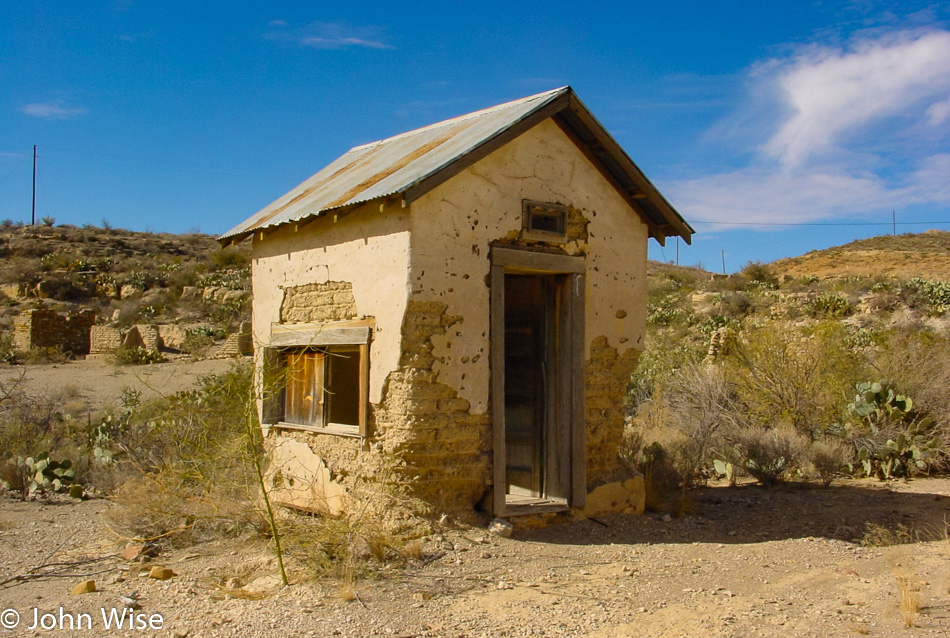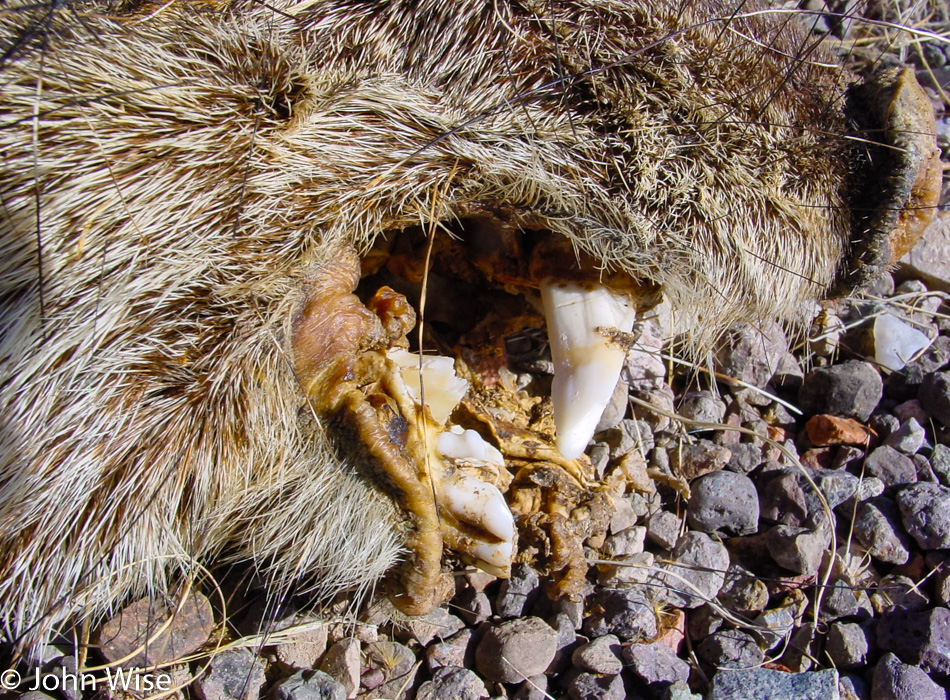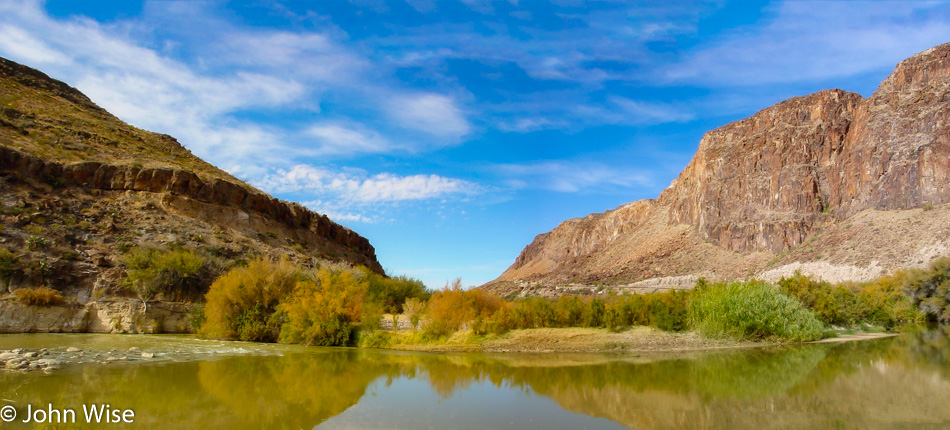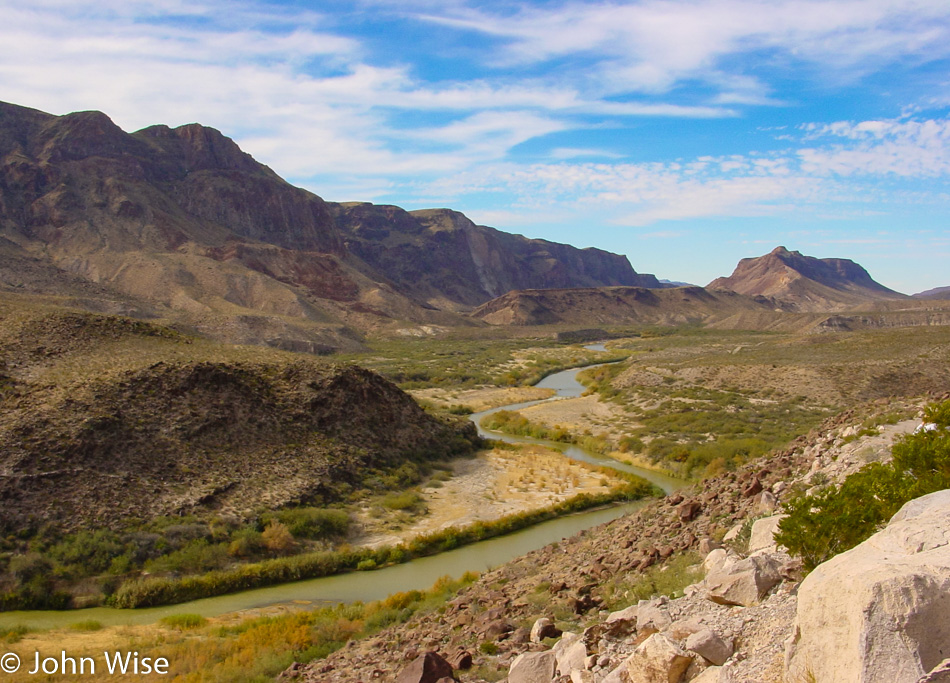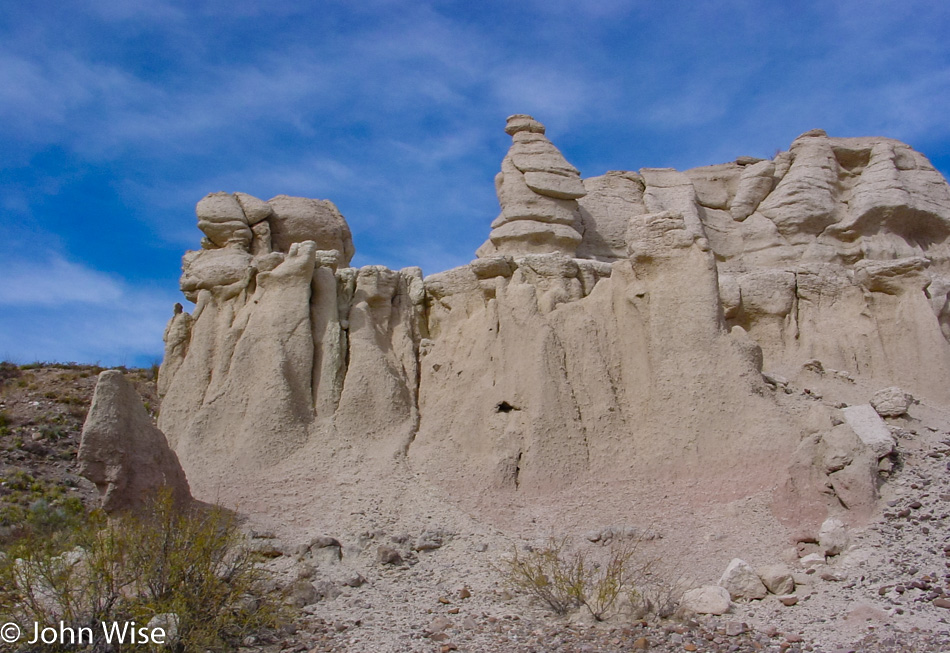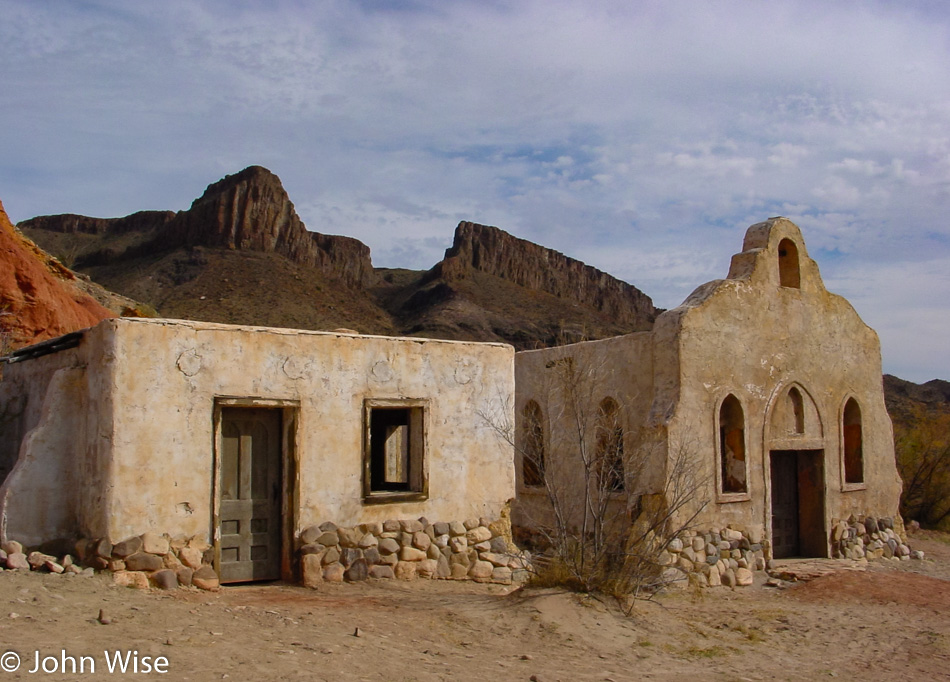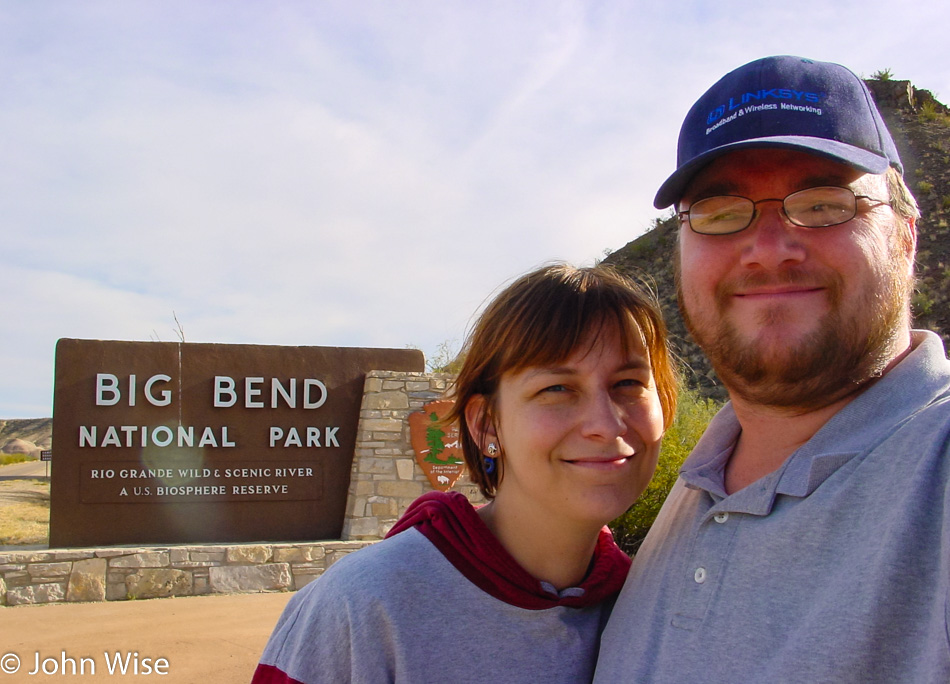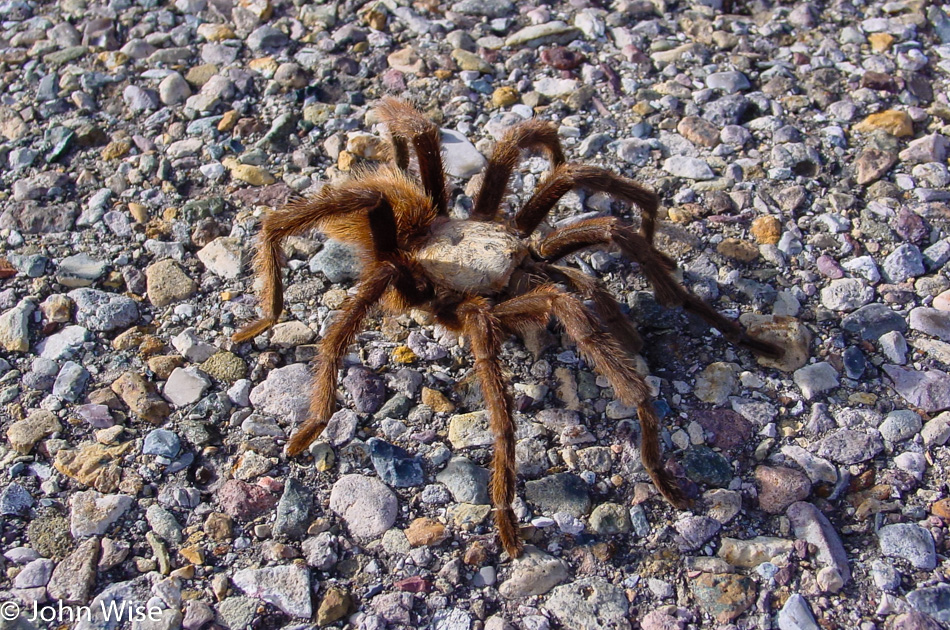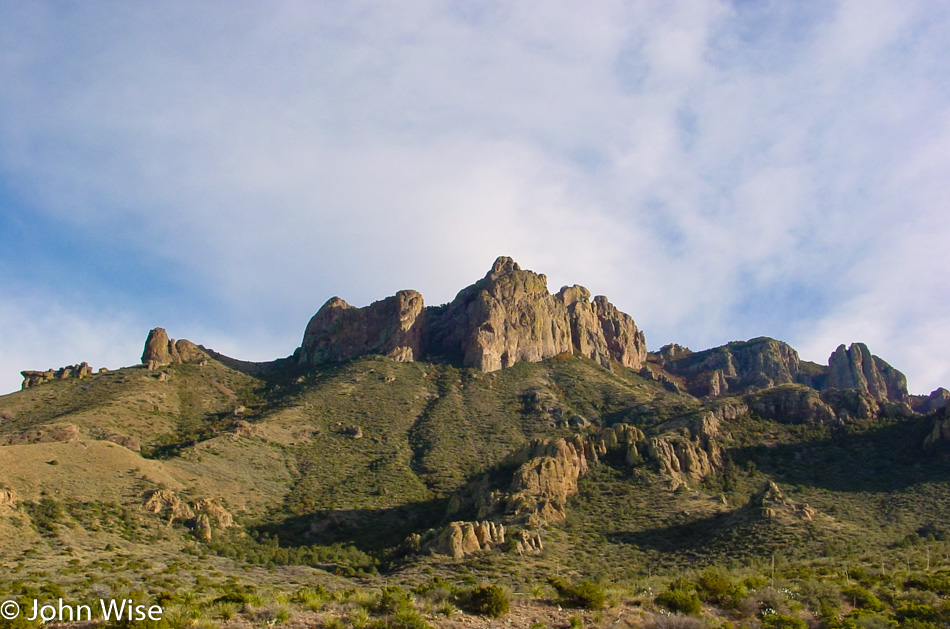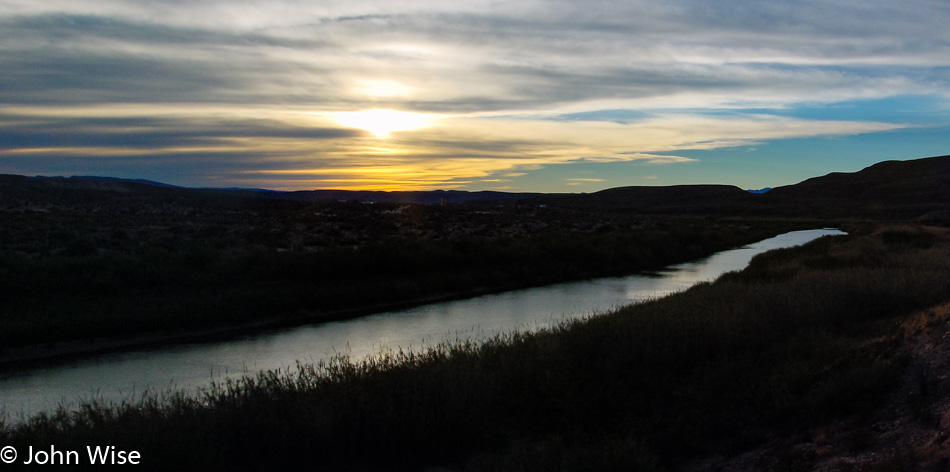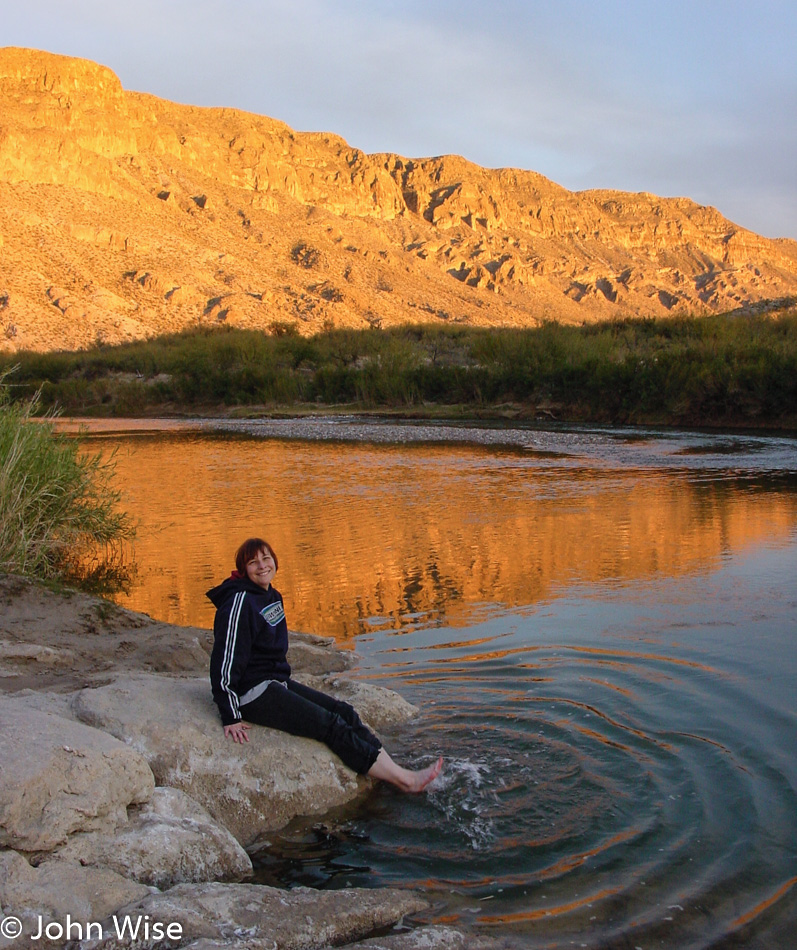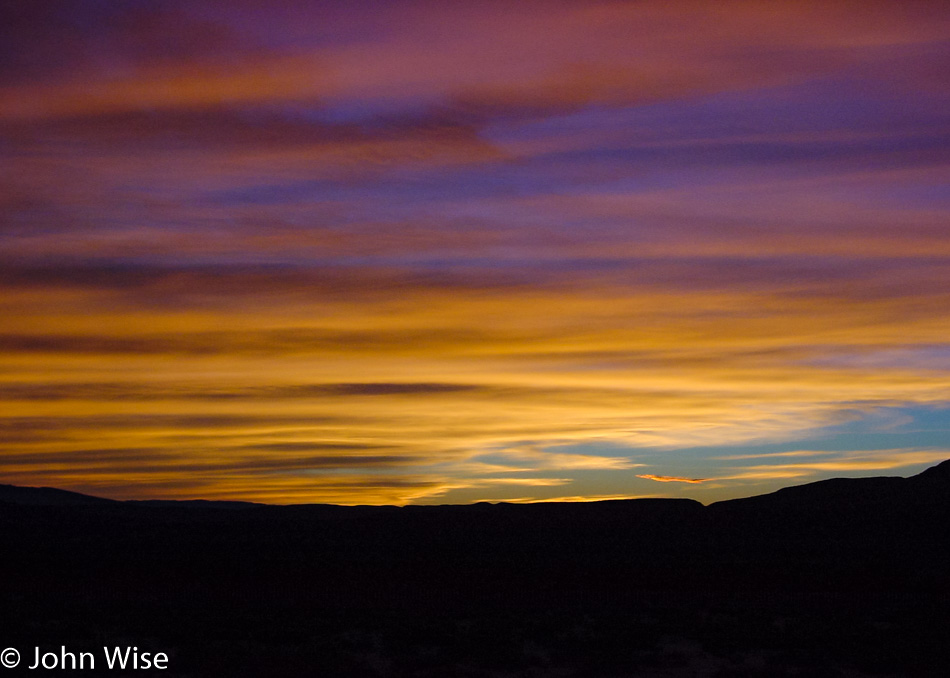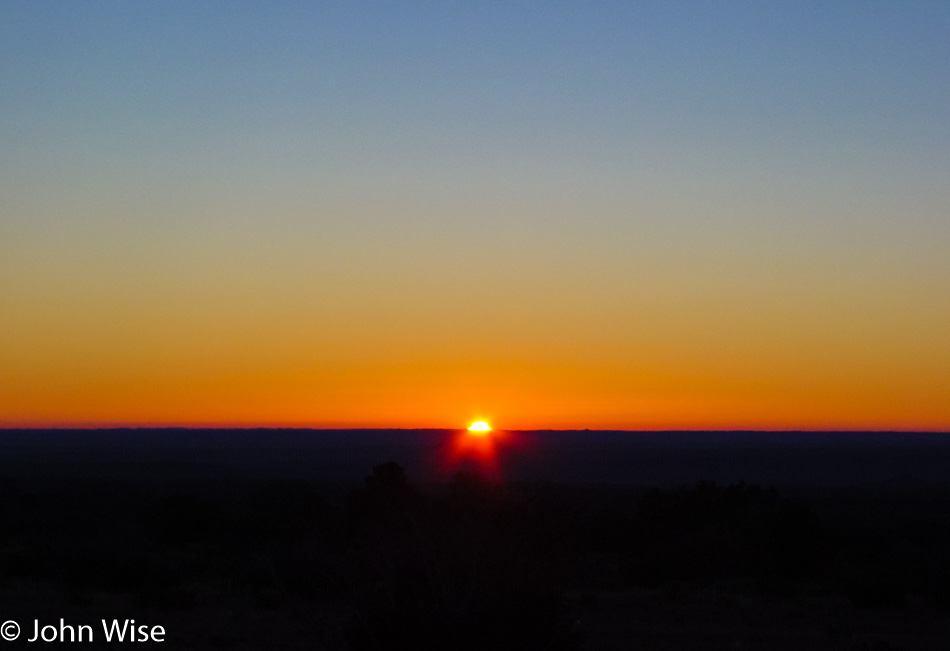
As you would have seen from yesterday’s post, Texas is not only a big flat, wide-open expanse of nothingness, though, from this photo, one might not be blamed for thinking just that. I could try explaining that we are up early due to our 100-mile drive to Carlsbad Caverns this morning or that we want to beat the crowds, traffic, bad weather, or whatever else, but there’s none of that. We just tend to be early risers while on vacation for these particular moments when the sun starts crawling back up over the horizon. Today’s sunrise is brought to you from near Manzanita Springs up Frijole Ranch Road in the Guadalupe Mountains National Park.
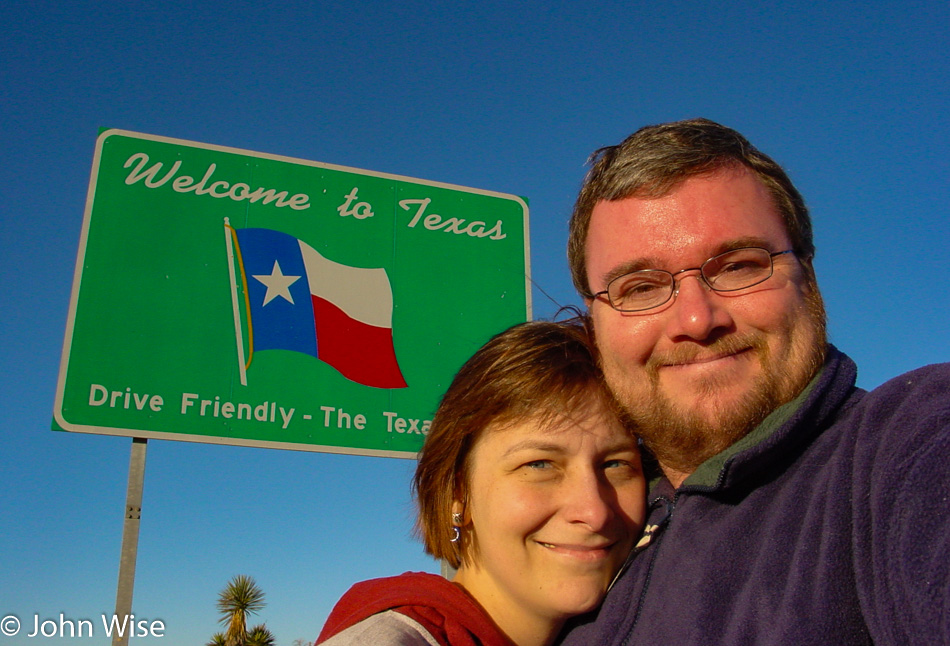
Wait a minute, I thought we were going to New Mexico? Well, we’ve taken our photo in front of a New Mexico state sign, but it was already evening when we crossed into Texas the other day, so we are making up for that.
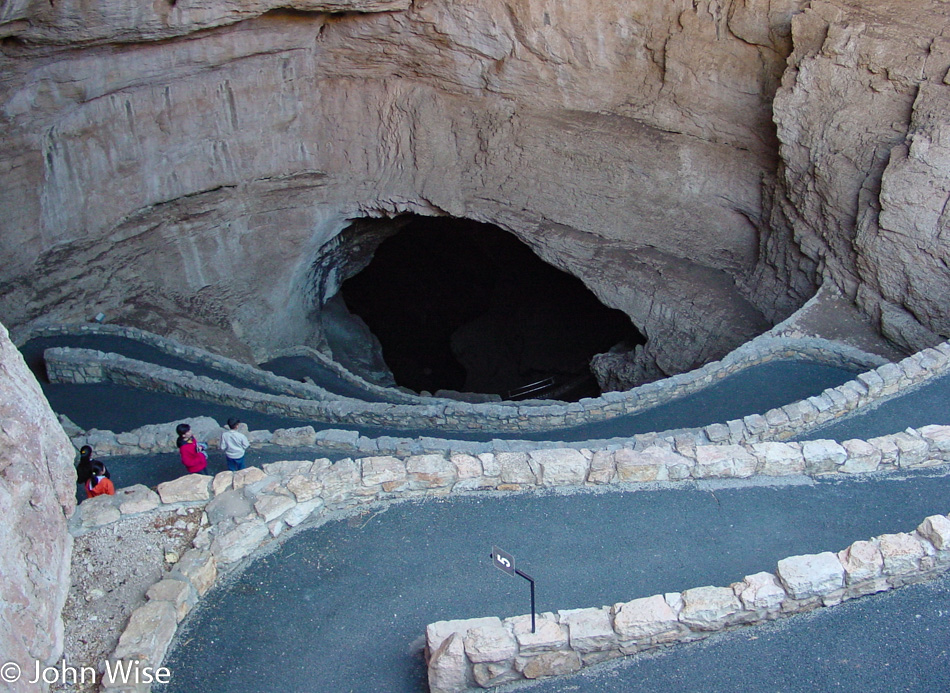
Taking the time to walk in the natural entrance of Carlsbad Caverns National Park. Why we didn’t do this on our previous two visits is beyond me; what a great way to enter the cave. Oh wait a minute I know why because we were in such a hurry on those trips like we are so often on any of these journeys. For the record, our first visit was in 1997 with Ruby and Axel Rieke and then in 1999 with Robert Bell and Mark Shimer. This is the third visit and the first in the 21st century. I’d be willing to bet a dollar it won’t be our last.
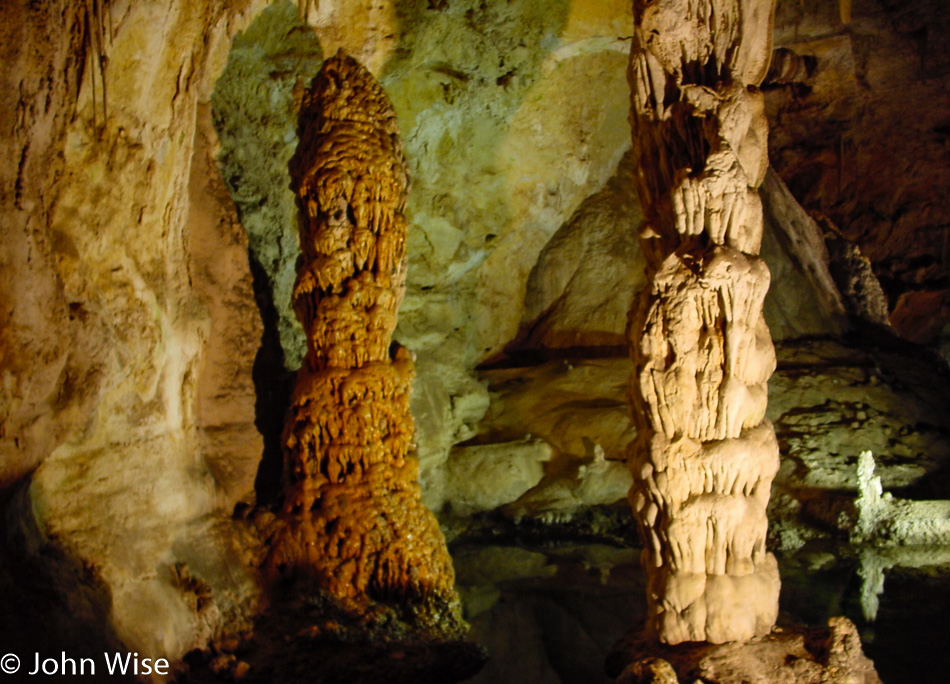
Nothing much has changed since we first visited five years ago; then again, this cave is mostly dormant now, and other than theft, nothing should be changing.
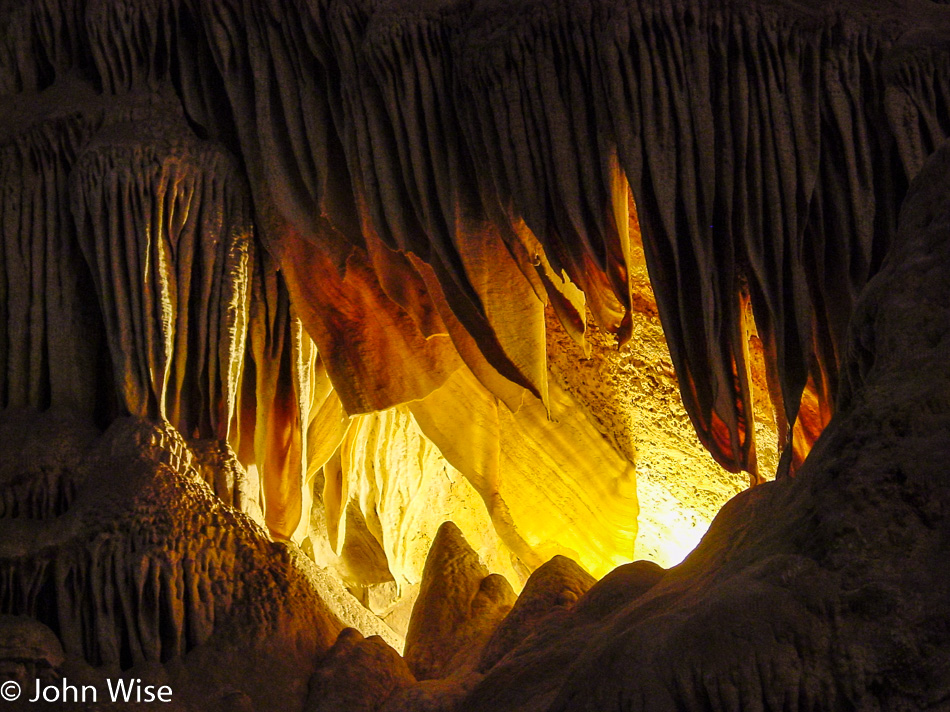
One thing that’s different, I can point out, is our ability to take somewhat better-quality photos. On our first visit in 1997, there were no consumer digital cameras beyond some early low-res thousand-dollar cameras that were horrible in low light. By 1999, we finally moved solidly into the world of 1 megapixel (1MP) images, and while a Nikon 2MP camera came out too, trying to figure out where you wanted to spend nearly a thousand dollars was seriously difficult, especially in an area of technology that felt like it was heating up and that we were seeing rapid advancements. A year later, we bought the camera that I’m using today, the Sony Cyber-shot DSC-S75 with 3MP, which was only $599.
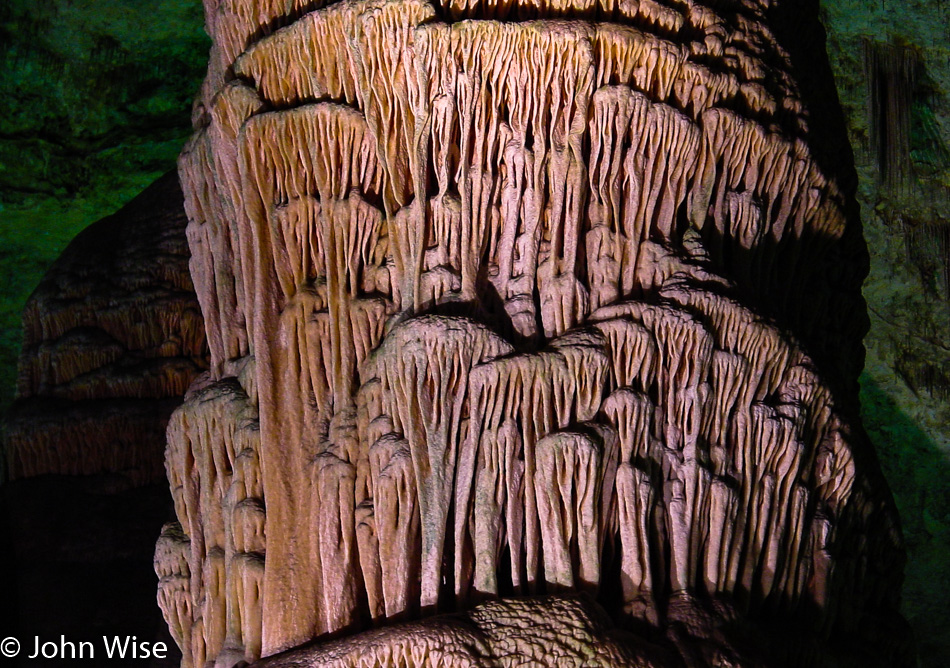
While I’m looking back at our improving ability to take photos, I’ll add one more thing. I would love to be using a DSLR (Digital Single Lens Reflex) camera, but consider that the 1.3MP Kodak that came out in 1991 cost $30,000, and an upgraded DCS-460 with 6MP of quality was released in 1995 for almost $36,000, and you should be able to see that the trajectory there is still a pricey one. By 1999, the Nikon D1 with 2.7MP capability brought the price way down to only $4,995, but this was still far too expensive for what amounts to being a disposable camera. Unlike film cameras of 100 years ago, which still can take interesting photos, I don’t think the low-quality images we are getting right now from digital cameras will survive the test of time.
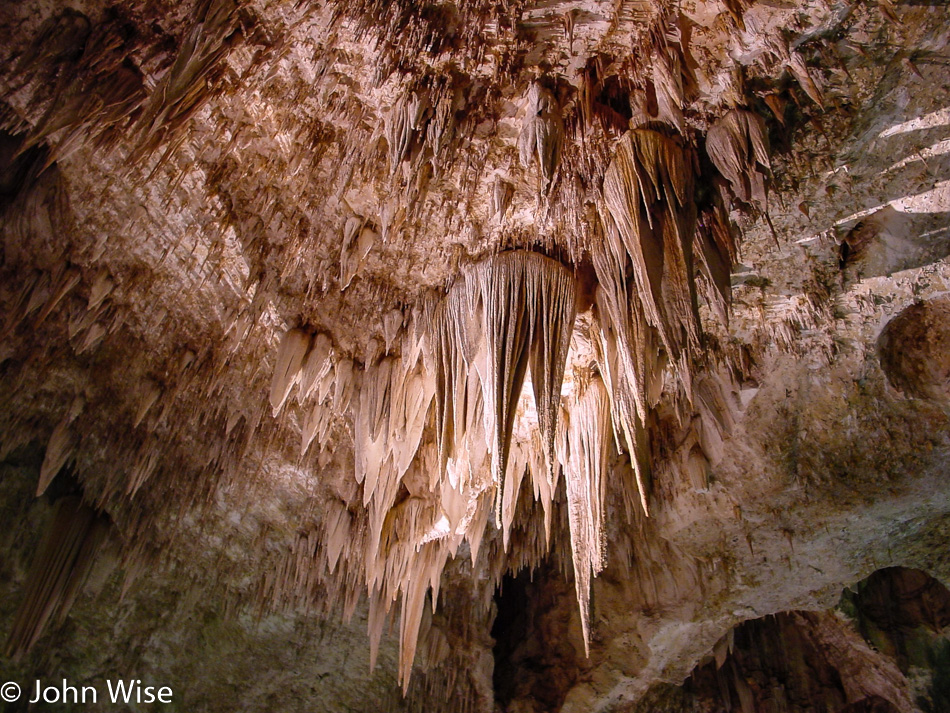
All the same, seeing these photos after our trip and the incredible detail available from an all-in-one point-and-shoot digital camera are astonishing to me.
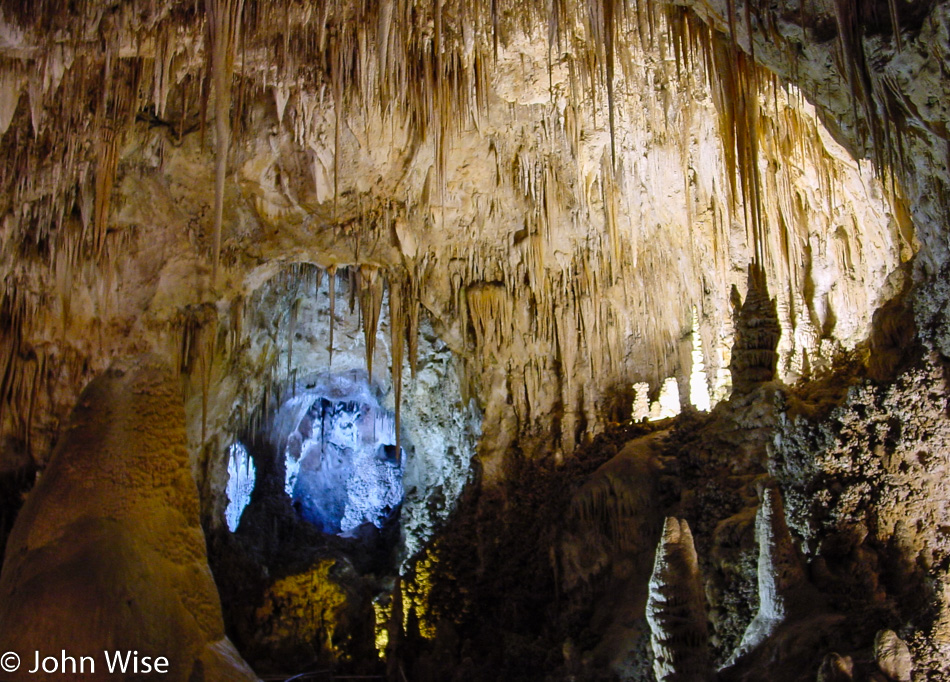
The larger point of this exercise of documenting our trips out in America and taking notes when we can find the time is to create a document that demonstrates what is possible by two people who are throwing off the responsibilities of conformity. Our condo is for sale, we’ve chosen not to have children, we don’t much care about holidays, birthdays, or anniversaries, and are quite okay with a hedonistic lifestyle of relative selfishness that eschews typical consumption patterns.
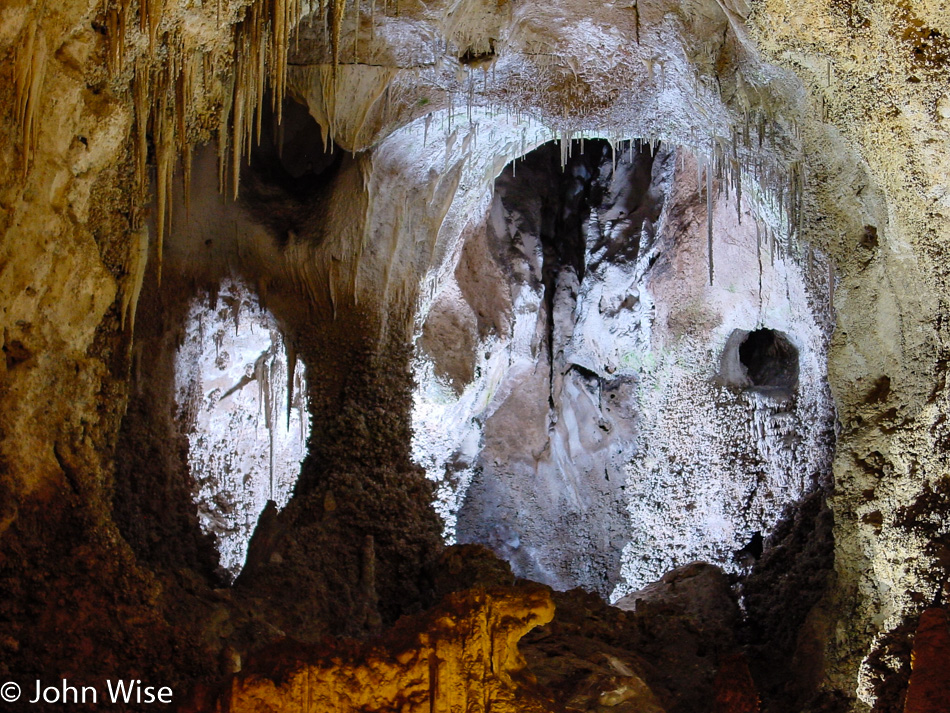
And all of this is for our effort to witness as much beauty and novelty as our time and budget will allow.
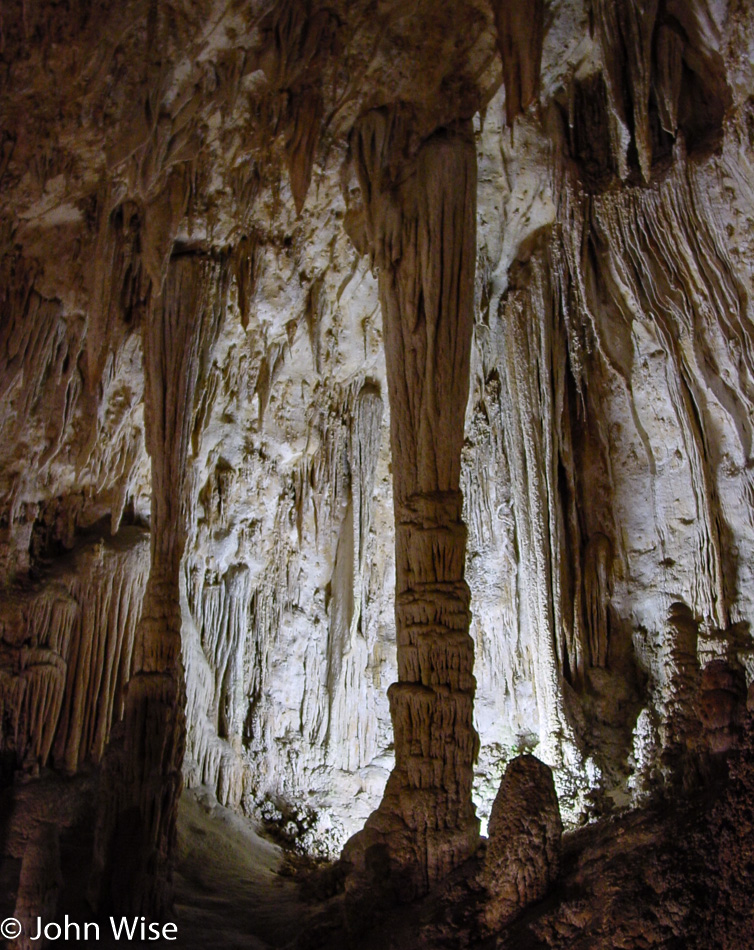
One of the greatest tools to access vast amounts of beauty is the National Park Pass. For only $50 a year or $10 for a senior pass if you are old enough (and that’s for the rest of your life!), you gain access to over 350 parks and monuments. This year alone, Caroline and I visited 20 National Parks and Monuments including Walnut Canyon, Redwoods, Yosemite, Sequoias, Death Valley, Lava Beds, Lassen, Crater Lake, Rocky Mountains, Devils Tower, Mt Rushmore, Colorado National Monument, Natural Bridges, Grand Canyon, Canyonlands, Mt St Helens, Olympic, Big Bend, Carlsbad Caverns, and Petrified Forest which we will visit tomorrow.
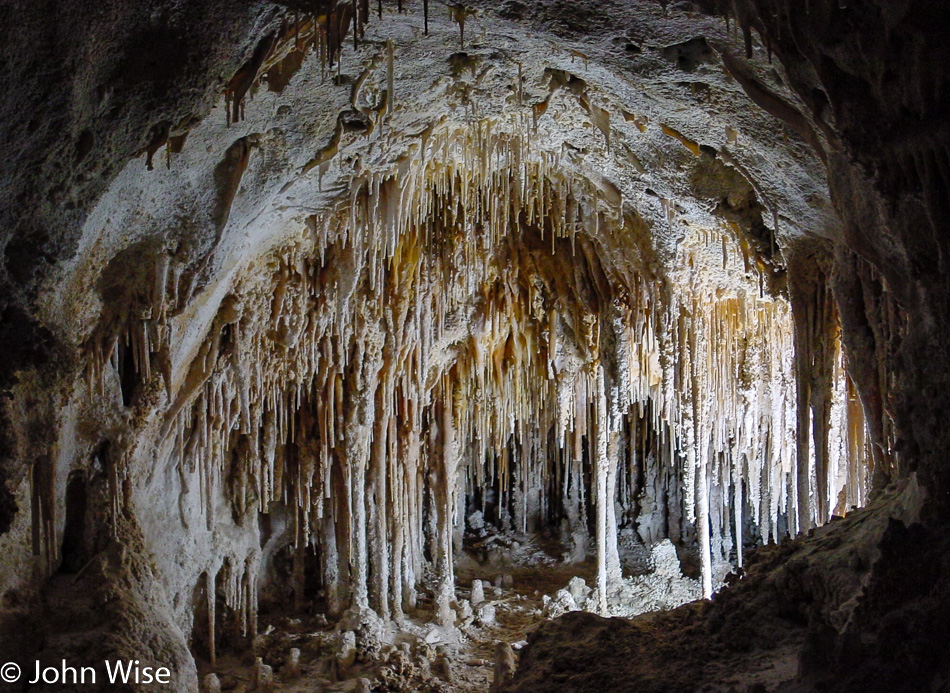
The aptly named soda straws. Looking at the formations in Carlsbad, Caverns never get old.
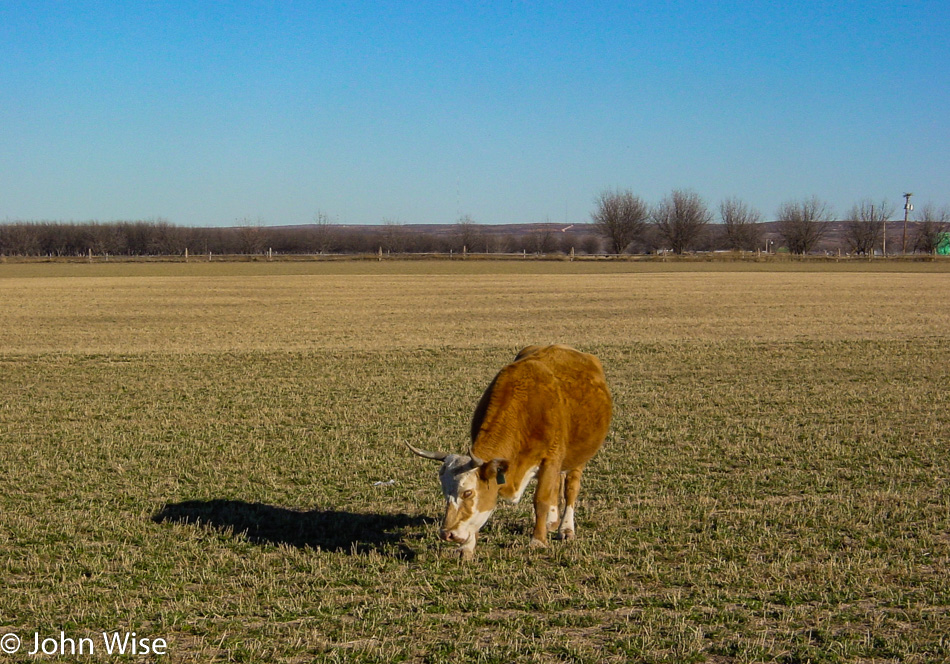
Because livestock also deserves to be recognized.
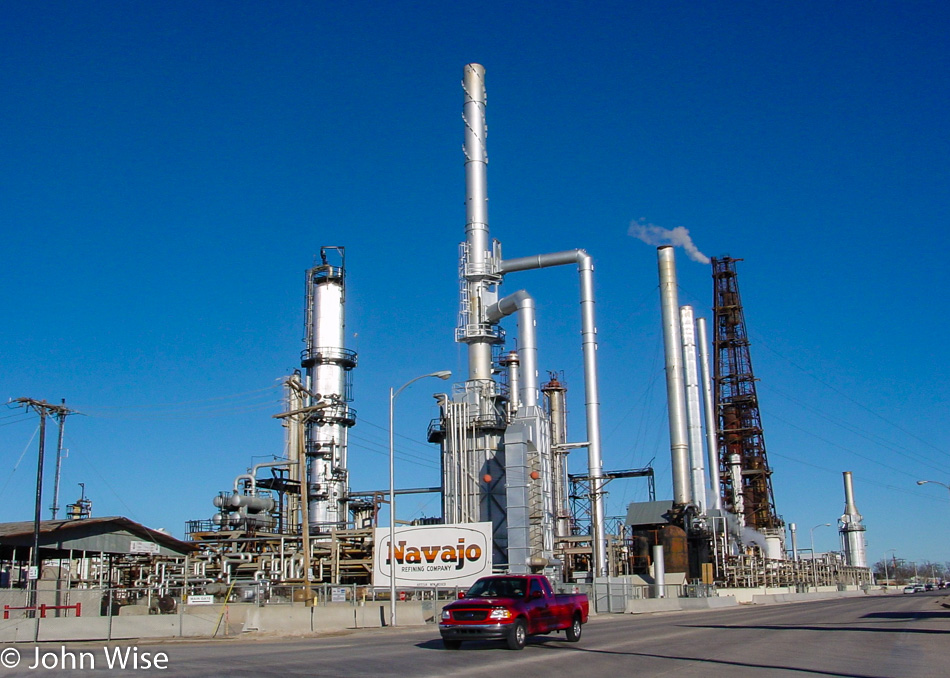
Sometimes, driving across New Mexico, it seems like the majority of the state’s economy is derived from oil and gas, maybe aliens, too.
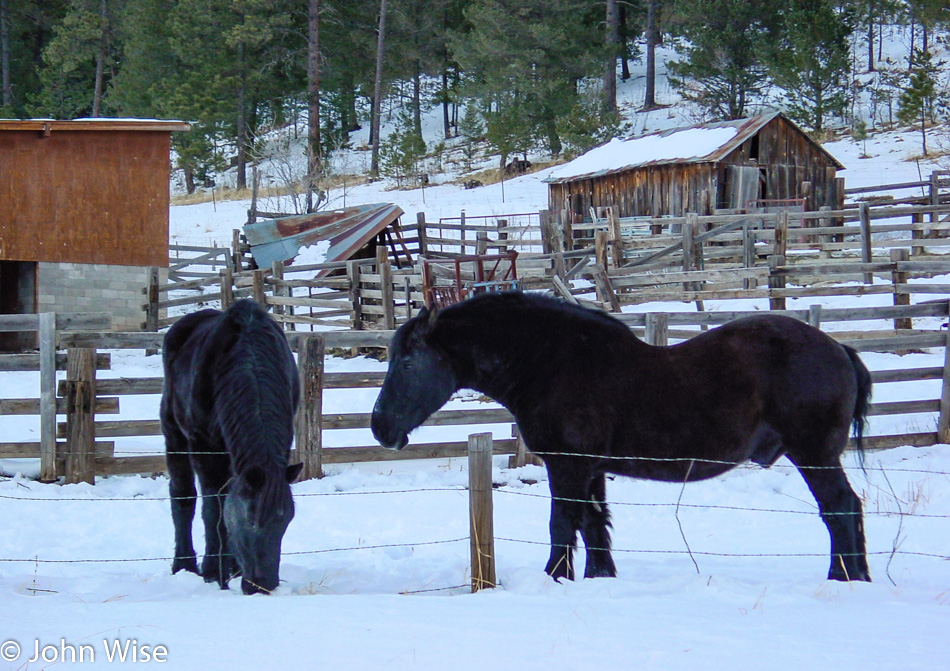
By the time we reach Cloudcroft, there’s enough snow on the ground that we know we don’t want to go deeper in the mountains, and up in Ruidoso, where we’d planned on staying, it promised to be much snowier. So when we reached Highway 54 going north, we stayed at the lower altitude and hoped to find something up that way.
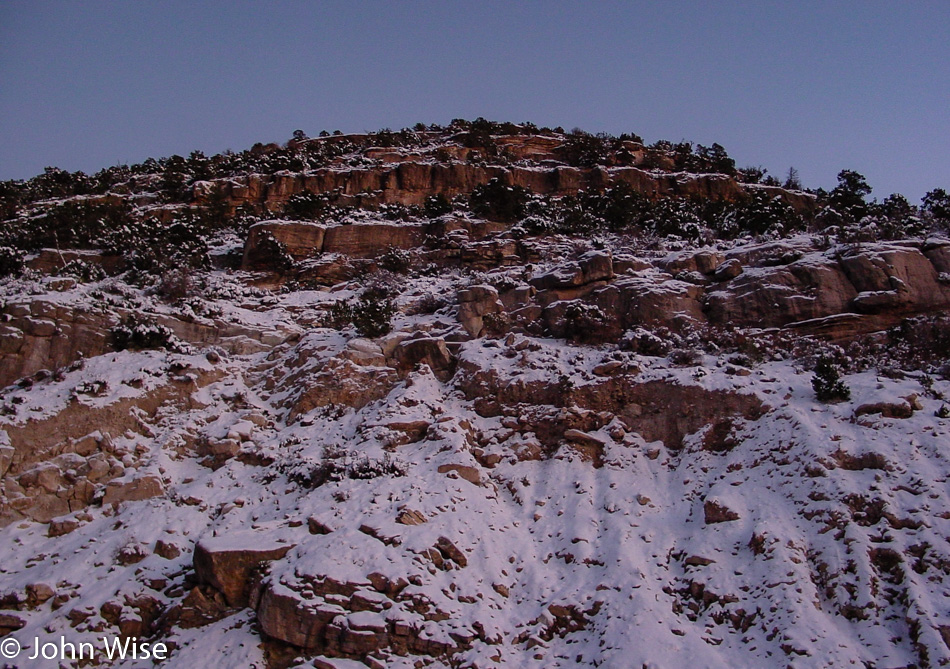
We’ll be calling it an early night as we have to wake shortly after four in the morning to make the 100-mile drive to Bosque del Apache south of Socorro, New Mexico. On our previous visit back in March, a docent at the wildlife refuge told us that the best time of year to visit is around Thanksgiving into January, when the largest number of migratory birds are hanging out. She also insisted we show up before sunrise to witness a “fly-out” that is allegedly one of the most spectacular sights one can see of wildlife in this part of North America. We grabbed a room at the Rainbow Inn in Carrizozo and were headed to sleep before 9:00.
